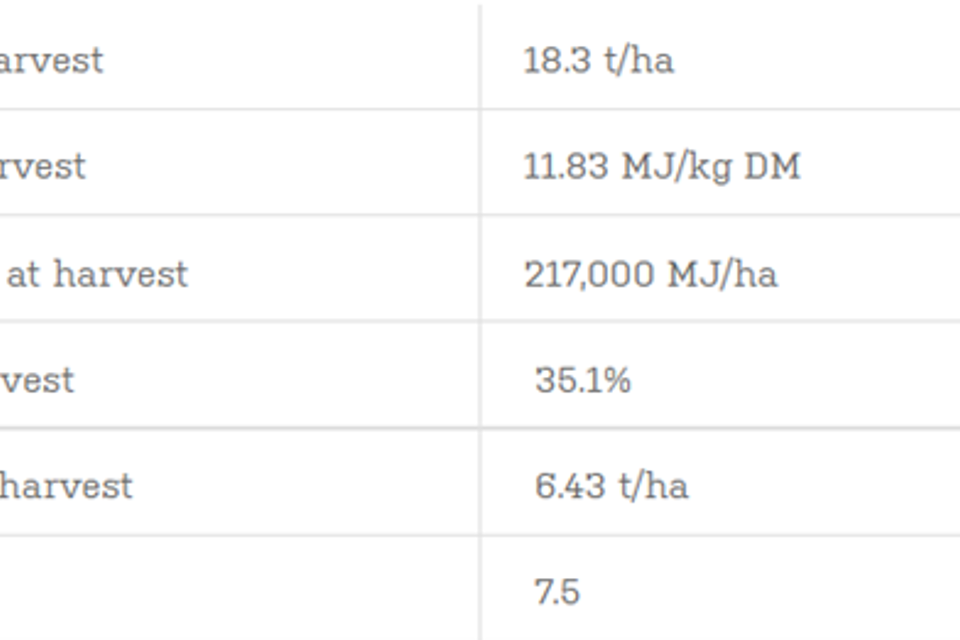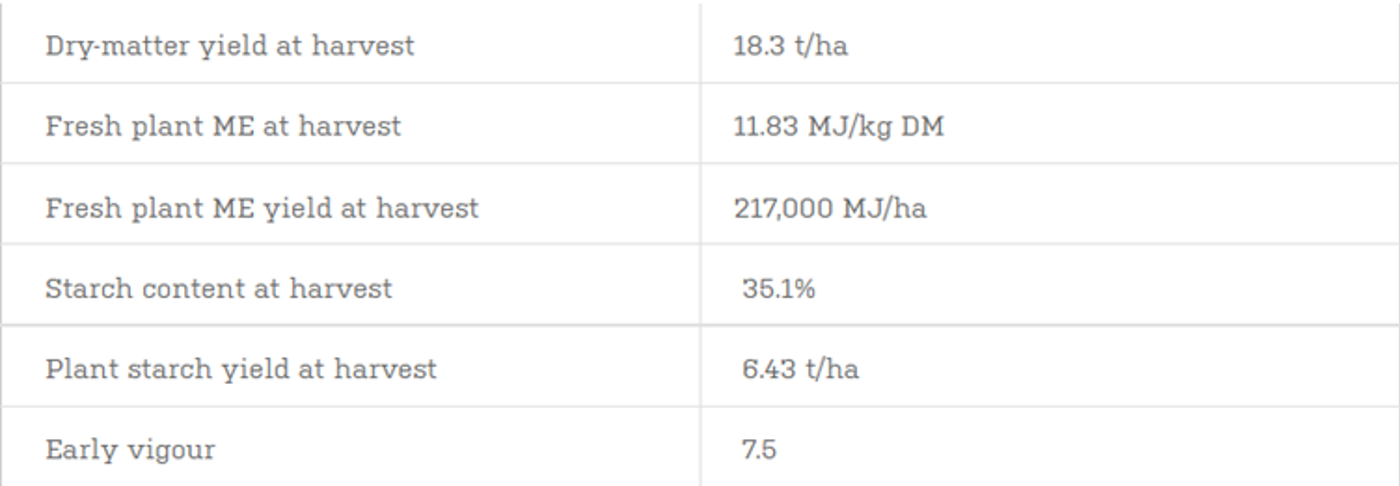
Responsible Maize Recipe proves its worth in Dorset
News - 18.01.21
A substantial acreage of early maturing maize is allowing J.F. Cobb & Sons to maintain a high level of soil heath and protection in the sensitive Poole Harbour.
A substantial acreage of early maturing maize is allowing J.F. Cobb & Sons to maintain a high level of soil heath and protection in the sensitive Poole Harbour catchment while making the most of the crop across a dairy business with one of the lowest per litre carbon footprints in the country.
Harvesting 220 ha of KWS Avitus from late August – a good week before the rest of the maize they grow at Winfrith Newburgh between Weymouth and Swanage – spreads the harvest workload while giving David Cobb and his team the opportunity to get in a ‘extra’ crop of Italian ryegrass ahead of the following season’s maize.
As well as reducing the risk of nitrate leaching and protecting the soil from rainfall with a winter cover, this delivers a valuable 3.5 tonnes of grass silage drymatter/ha from a mid-April cut for their 13,000 litre-average, high genetic merit Chalclyffe Holstein herd.
“Our climate is definitely more variable these days,” points out Mr Cobb. “Summer drought is a particular risk for much of our grassland. And, when it comes, the rainfall is much more intense than it used to be, putting particular pressure on the ground.
“Maize has become increasingly important to us as our business had developed. Forty years or so ago it was useful insurance against a challenging grass-growing season. But, thanks in no small part to the considerable progress made by breeders, it’s now the essential mainstay of our milk production – at least as important as the grass in our multi-cut silage system.
“Our combination of coastal land and altitudes of up to 700m means there’s a good bit of the ground on which we can’t grow maize. We routinely silage around 150 ha of winter wheat and barley in the rotation to help here. Even so, some fields have to be in maize every year.”
Making the best possible use of separated slurry solids and liquids from the cubicle sheds alongside farmyard manure from the youngstock yards means the only artificial fertiliser needed for the Newburgh dairy’s maize is DAP on ground further away from the unit. Regular organic manuring maintains excellent soil health too.
However, the family is acutely conscious of the need to minimise the environmental impact of a crop which can be considerable if things aren’t managed right.
Wherever they grow maize they make a point of getting a crop in behind it so their soils are all well-covered over the winter. Earlier harvesting has opened up the opportunity of ‘double cropping’ for extra grass silage while the later-harvested crops go into winter cereals for wholecrop.
Sown from mid-April without the need for film, its impressive combination of yield and earliness means the Avitus delivers a good 13.5 t DM/ha in just 20 weeks. Rapid harvesting as soon as it’s fit from the last week of August allows a mixture of fast-growing Italian ryegrasses to be drilled in early September, giving excellent establishment and winter cover.
“We cut the maize as close to the ground as possible with our high capacity Krone BiG X 1180 forager,” explains arable manager, Phil Stone. “After a single pass with the Terrano, we drill the IRG with a Horsch Pronto within two weeks of harvest and flat roll to crush the stover. This gives the grass plenty of time and temperature to grow away strongly ahead of the winter.
“This simply wasn’t possible when getting a decent crop of maize off early meant by mid-October. But breeding has really moved on. Accurate yield data from our 1180 shows Avitus doesn’t produce a lot less than our main crop varieties. And this is a price we’re happy to pay for the much wider harvesting window it gives us, quite apart from the extra 3.5t DM/ha from the ‘double cropping’ opportunity.
“We first tried 20ha of the variety in 2018 on the advice of Agrii’s Dorian Jones who’s been providing the business with seed for more than 40 years. The fact that we grew more than 10 times the area last season says it all. The variety suits both our production and environmental needs very well. Early harvesting means we haven’t had significant problems with brackling. And while continuous maize ground can lie very wet and vulnerable over the winter, a cover of Italian ryegrass works wonders, keeping the soil much drier and firmly in place.
“Working with Wessex Water, we have been trying oil radish amongst other winter covers,” Mr Stone adds. “Its taproot is valuable in soil structuring and it does an equally good job in drying the ground and protecting the surface over winter. Unlike the ryegrass, though, it gives us no value as a feed.”
As part of their sustainable approach, the Newburgh dairy team were establishing around half their maize with min-tillage until recently. An upsurge in European corn borer, however, prompted a return to ploughing across-the-board. Combined with autumn flat rolling to break open the stover and expose the larvae, this has contained what had become a worrying problem.
Despite ploughing, double-cropping means the soil is only open and vulnerable to the elements for the least possible time. As soon as the IRG is cut in the first half of April the muck goes on, is ploughed-in and the maize drilled in 75 cm rows at 40,000 kernels/acre with a Vaderstad Tempo – all within a week or 10 days. The great precision the drill gives, even at speeds of 12km/hr, has allowed sowing rates to be eased back from an original 45,000 kernel/acre.
Where needed, DAP is applied to the seedbed and a full pre-em, post-em programme employed for the most effective early weed control. Definite dry-matter yield benefits have been secured from a single eyespot spray, applied as late as possible in July – just before the sprayer can cause crop damage.
“It’s crucial we get the maize spot-on here,” says herd manager, Paul Kitchen. “We target over 1000kg milk solids/cow/year from a TMR intake of 28-29kg DM/day. Between 55% and 60% of the ration is forage, and maize can be over 70% of the forage component. So, we need enough of it with the best nutritional value we can get.
“Avitus has done us proud again this season, averaging a typical 32% dry-matter with a high digestibility and palatability. In addition to the most appropriate agronomy, first-class clamp management is a priority – both at ensiling and feeding out.”
The family always use a proven additive, employ as much horsepower on the pit as they do for the forager, and are diligent in double sheeting, netting and weighting with a solid layer of tyres. Feeding out, they’re working across the full silage face every two days with a rotary peeler, keeping it as tight and clean as possible to minimise spoilage.
“Over the years, we have developed a maize recipe that works well for us, taking us as much risk as we can out of our forage production in an increasingly uncertain world,” Mr Cobb concludes. “Today’s high yielding varieties mean we need fewer acres to meet our herd’s needs. The harvesting spread we have with a reliable, high yielding early maturing variety like Avitus in our mix is essential. And it enables us to maximise our total forage dry-matter production/ha while ensuring the greatest soil protection.
“We are continuing to explore ways of further improving forage performance while minimising our environmental footprint with the likes of lucerne and red clover, longer-term leys and, of course, progressively more sustainable maize production.”
Pick of the early maturing bunch
While its environmental benefits have since become an important asset for the business, Agrii seed manager, Dorian Jones first recommended Avitus to the business for its unrivalled yield in the early segment.
“We identified the variety as like a real step forward in early maturity performance when we first saw it in trials,” he says. “And when it came onto the official forage maize descriptive list for 2019 sowing it didn’t disappoint."
Not only did it join the list as one of the three highest-yielding first choice varieties for favourable sites, but it was also well within the top 10 for less favourable sites. A very rare occurrence, indeed, underlining its particular consistency.
“The yield gap between Avitus and the best varieties with a similarly high dry-matter content at harvest was clear for all to see with its first appearance on the first-choice favourable variety list. And it has maintained its place within the top half of these rankings for 2021 sowing
“With a current list DM yield of over 18t/ha, an ME of 11.83 MJ/kg DM and starch content of 35.1%, the variety has lost nothing with time. Its early vigour is equally impressive and it has the rare distinction of laying down starch before dry-matter. Unsurprisingly, it remains the Number one starch yielder of all 30 first choice varieties on the 2021 favourable site list. We continue to see Avitus as the pick of the very early variety bunch.”
Avitus Vital Statistics

BSPB/NIAB: First choice varieties for favourable sites (2021 Forage Maize Descriptive List)
Join Our Community

Agrii X
We love engaging with clients and partners. Give us a follow and let's share stories for the community.

Agrii Instagram
A picture paints a thousand words. Follow us on Instagram to see what we are up to.

Agrii Facebook
Follow us on the worlds biggest social media site for the latest news and events straight to your feed.

Agrii LinkedIn
If you are all about the business, connect with us on LinkedIn to build your network
Stay In Touch

Newsletter Sign-Up
Receive email updates on topical news and information from around Agrii and UK Farming.

Listen To Our Podcasts
Listen to the Tramlines Podcast. Fortnightly chat about agriculture and trials with your host Tony Smith.

Agrii Insights
Read essential agri intelligence for profitable farming.

Find an Event
Join us for our upcoming events and tours.



